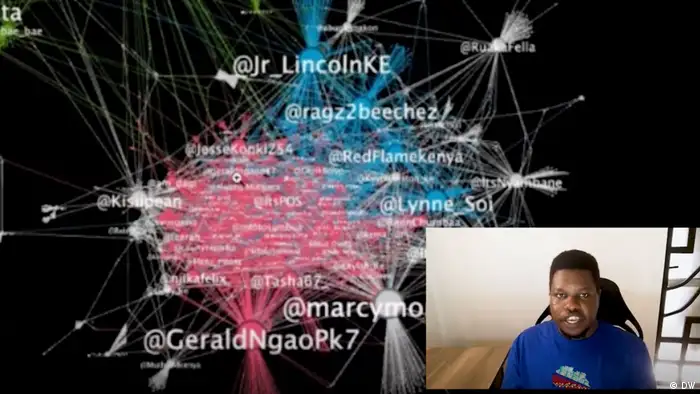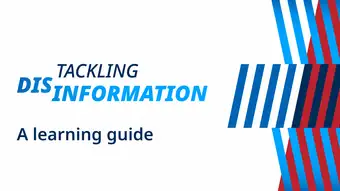Tackling disinformation: A learning guide
Power of network analysis in combatting disinformation
Explore how network analysis outpaces traditional fact-checking by mapping disinformation's spread and its key players. Discover tools and more with Allan Cheboi to predict and counter false narratives effectively.
Network analysis is a method used to investigate and visualise the connections and relationships within a network. It can be used, for example, to analyse social media networks or track organized crime syndicates.
When network analysis is used for to track disinformation or information manipulation campaigns, it can help identify the key actors driving such a campaign, the tools and techniques they use to do this and narratives that they are attempting to amplify.
Unlike fact-checking, which focuses on debunking individual items of content, network analysis identifies key influencers and nodes within a network that play a significant role in information dissemination. This helps in understanding the mechanisms and actors responsible for its spread.
Network analysis aims to predict where disinformation might arise and spread, allowing for preemptive action.
Why is network analysis useful?
To conduct network analysis you need to combine a few types of skills, develop a comprehensive methodology that enables the in-depth research required for network analysis investigations and have the right tools.
Unlike traditional newsrooms, a network forensics team requires to be staffed largely by data scientists or forensic researchers, overseen by veteran editors, supported by technologists, who dissect digital evidence that would ordinarily be indecipherable to journalists.
What is the ABC(D) framework?
There are a number of globally accepted standards and frameworks that enable comprehensive network analysis to ensure that the methodology and data-driven evidence is interoperable with counterparts globally.
The ABC framework, developed by Camille François, Graphika’s chief innovation officer, is used for describing and analysing influence operations and disinformation campaigns using an “ABC” three criteria model.
Since its publication, this framework has been widely adopted. Some researchers have added a D to the framework, making it the ABCD framework to cater for the aspect of Distribution where researchers/ investigators can track how disinformation diffuses and spreads owed largely to the digital architectures of online platforms. In the EU context an ABCDE FRAMEWORK has been developed. The key elements of the framework are the five ABCDE components: actor, behavior, content, degree, and effect.
What are some limitations of network analysis?
Text based analysis: Network analysis primarily relies on text based analysis. Detection of campaigns that primarily rely on images and especially videos (such as those on TikTok) is extremely difficult.
Black box platforms: Social media platforms such as TikTok, Instagram, X, etc. are essentially black boxes to researchers, because the platform has provided very limited data access to independent researchers.
Dark social: Platforms such as Telegram and WhatsApp are increasingly being used as spaces where original disinformation content is seeded before being shared on open social media platforms like Facebook and Twitter. This makes it difficult for network analysts to track the original source of such content.
Generative AI: It can be used to develop inauthentic content: Such content evades detection by traditional tools used by investigators. This includes the use of deep fakes and soft fakes for amplifying disinformation content. Technologies such as ChatGPT and Bard have enabled capabilities such as creation of unique texts that could be amplified online, evading detection by techniques such as ‘copy-paste’ assessment used by disinformation researchers across the globe.
This article is part of Tackling Disinformation: A Learning Guide produced by DW Akademie.
The Learning Guide includes explainers, videos and articles aimed at helping those already working in the field or directly impacted by the issues, such as media professionals, civil society actors, DW Akademie partners and experts.
It offers insights for evaluating media development activities and rethinking approaches to disinformation, alongside practical solutions and expert advice, with a focus on the Global South and Eastern Europe.
DW recommends
Audios and videos on the topic
- Date 15.04.2024
- Author Allan Cheboi
- Feedback: Send us your feedback.
- Print Print this page
- Permalink https://p.dw.com/p/4eXn6
- Date 15.04.2024
- Author Allan Cheboi
- Send us your feedback.
- Print Print this page
- Permalink https://p.dw.com/p/4eXn6


